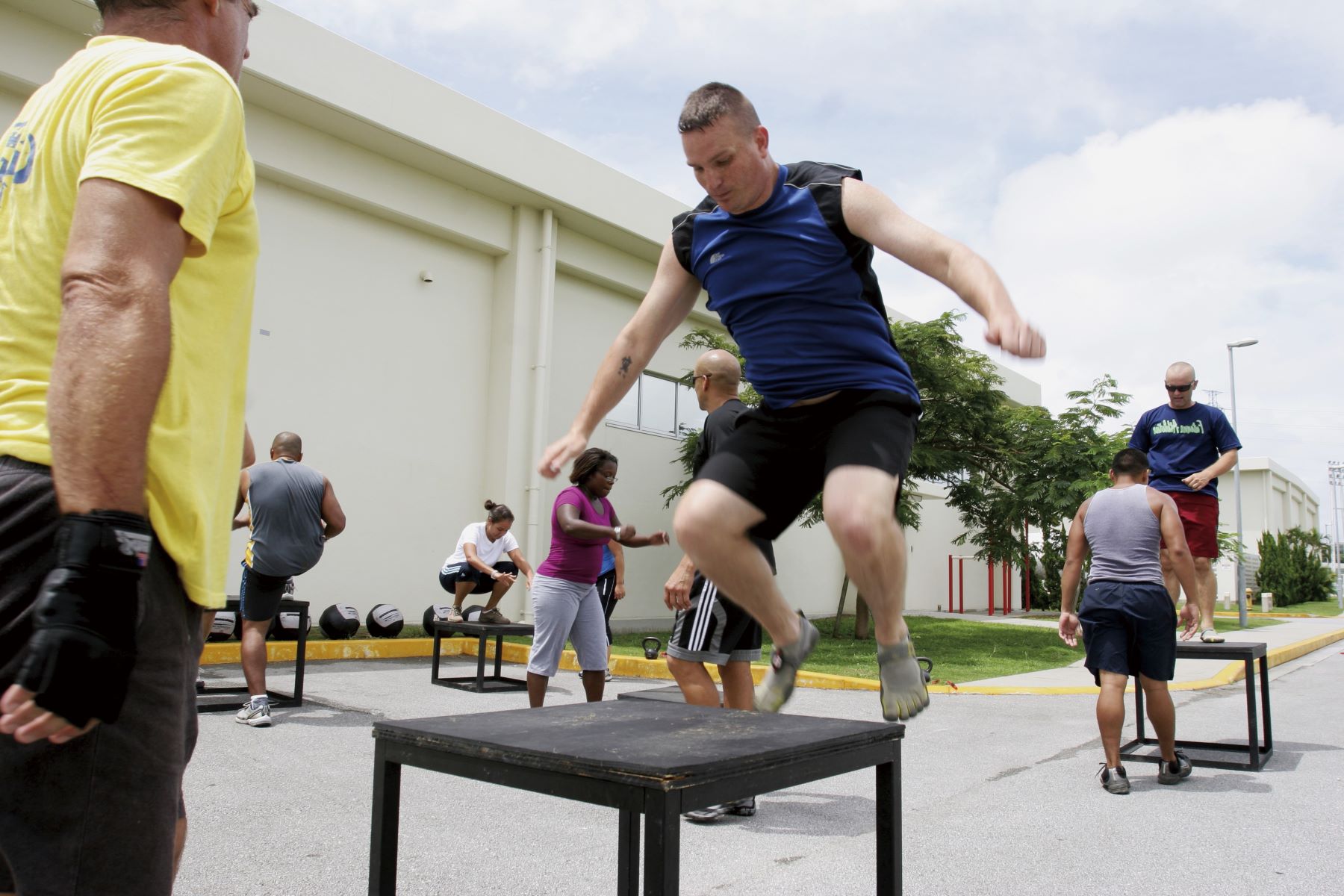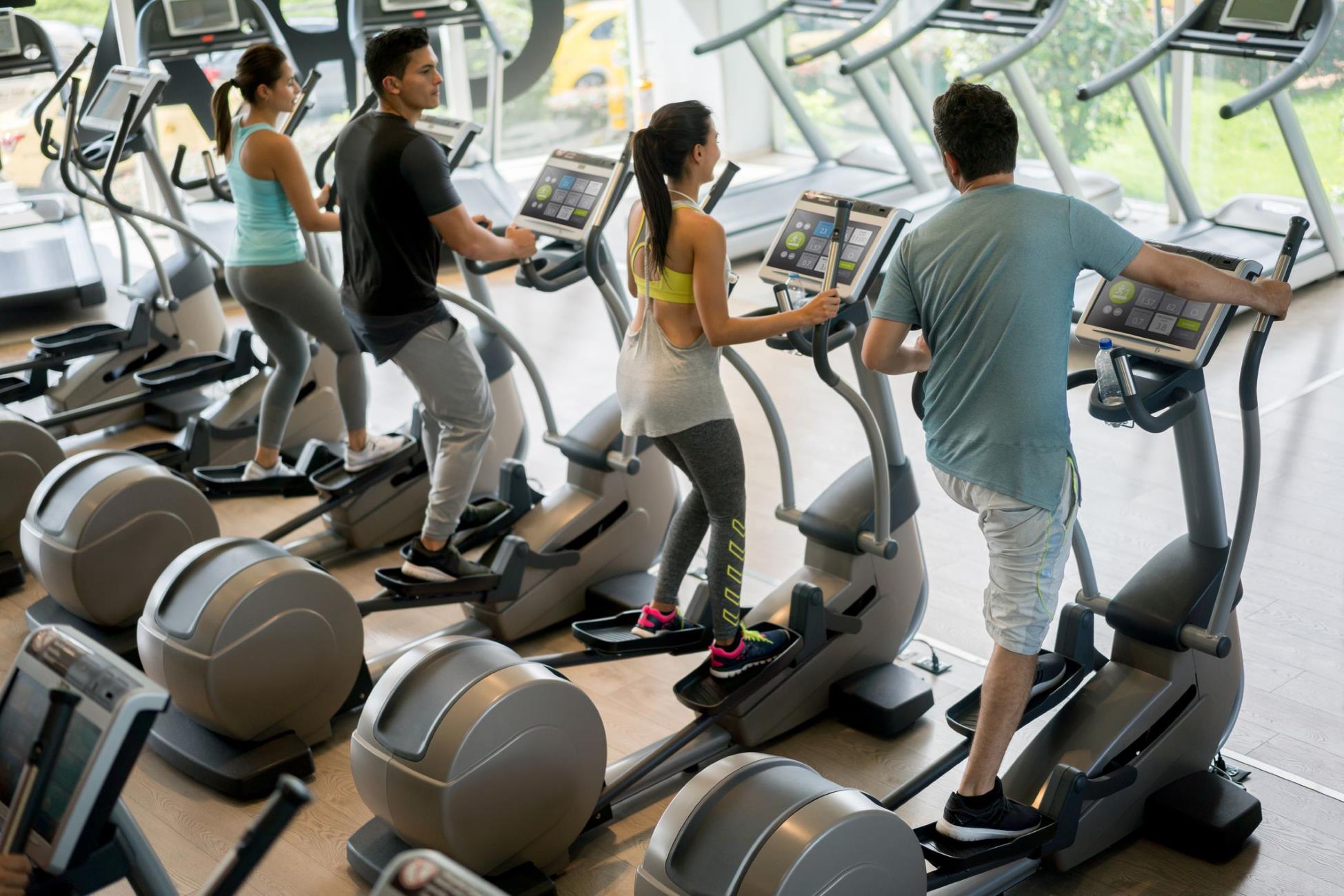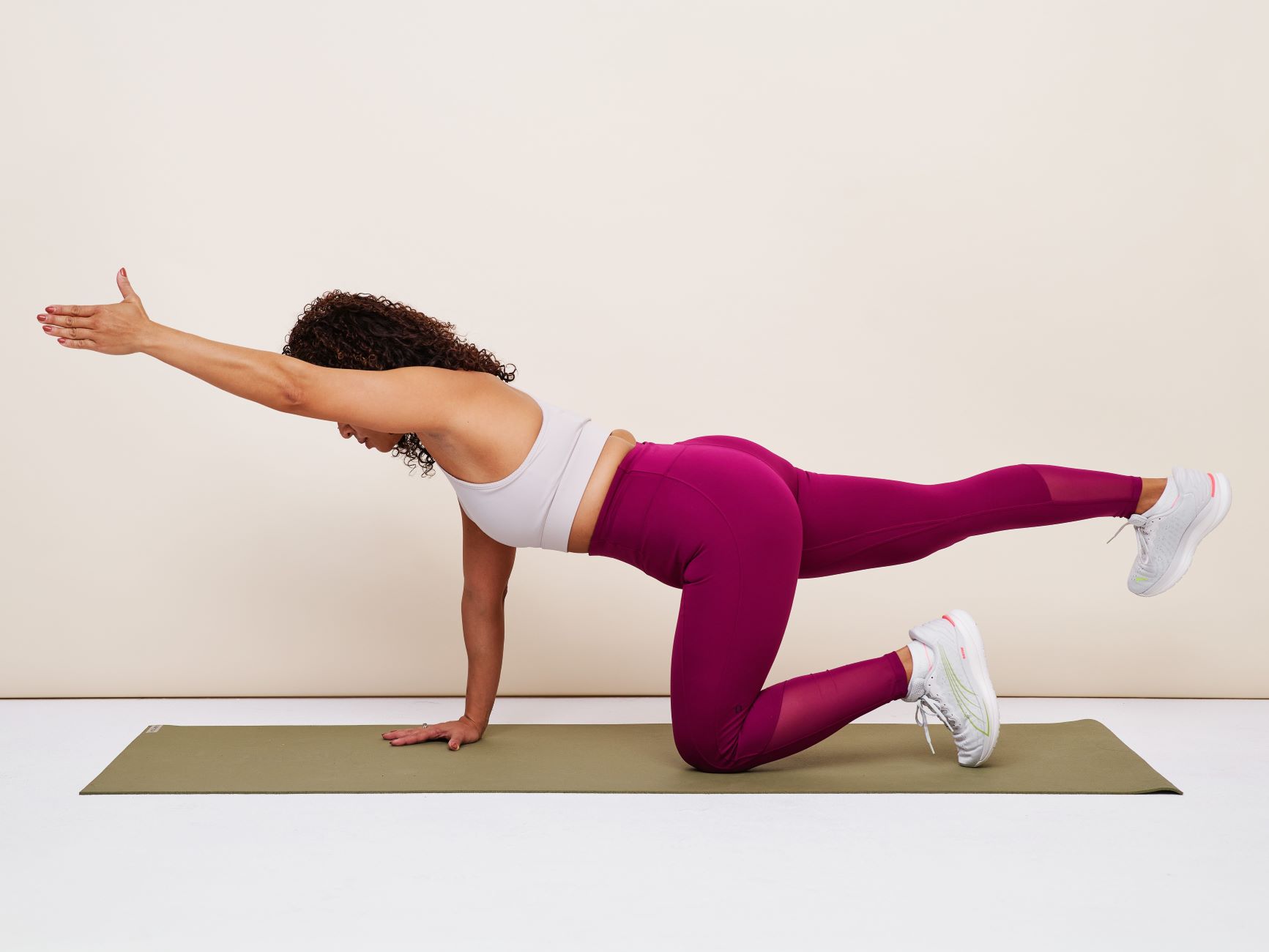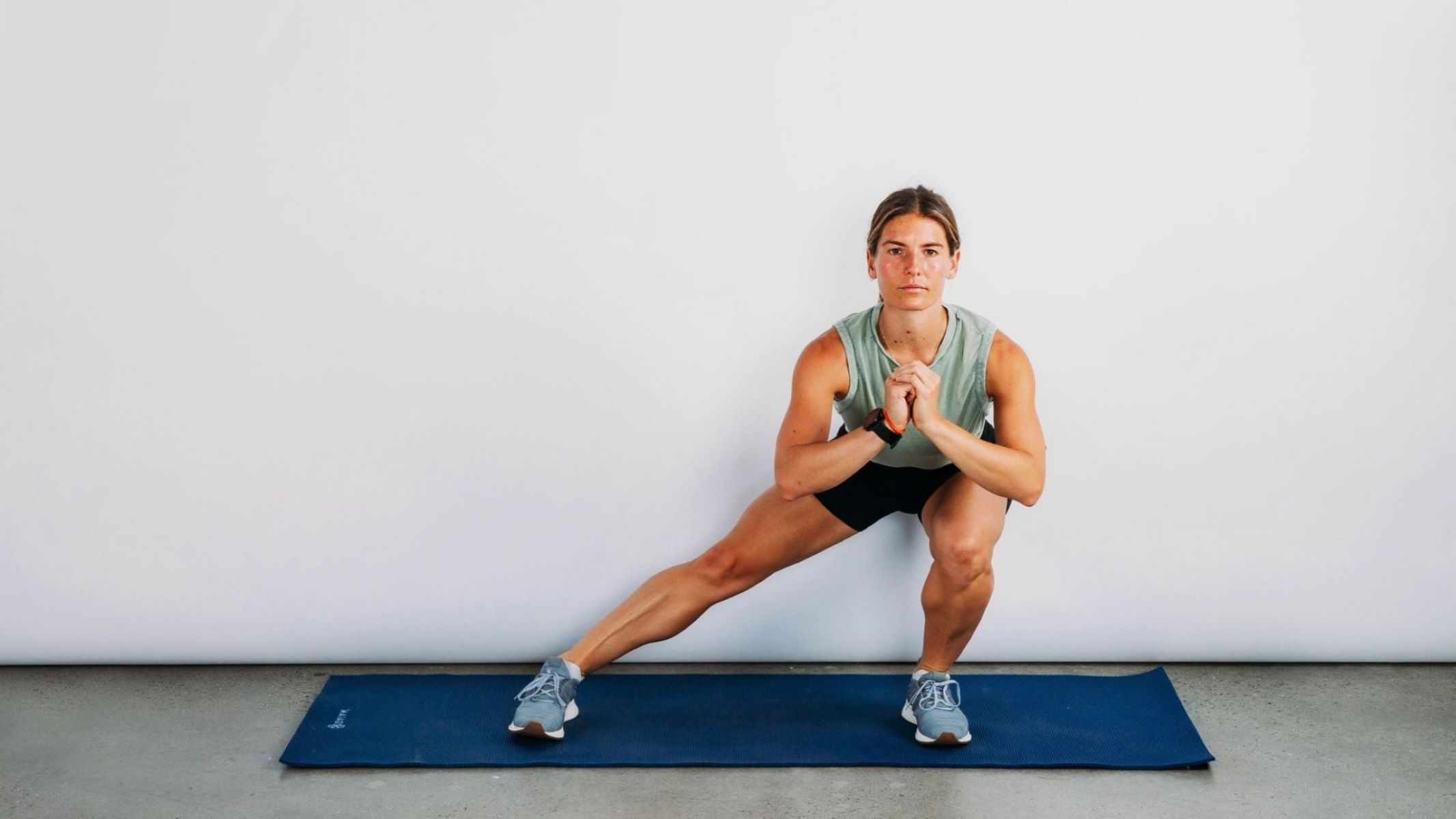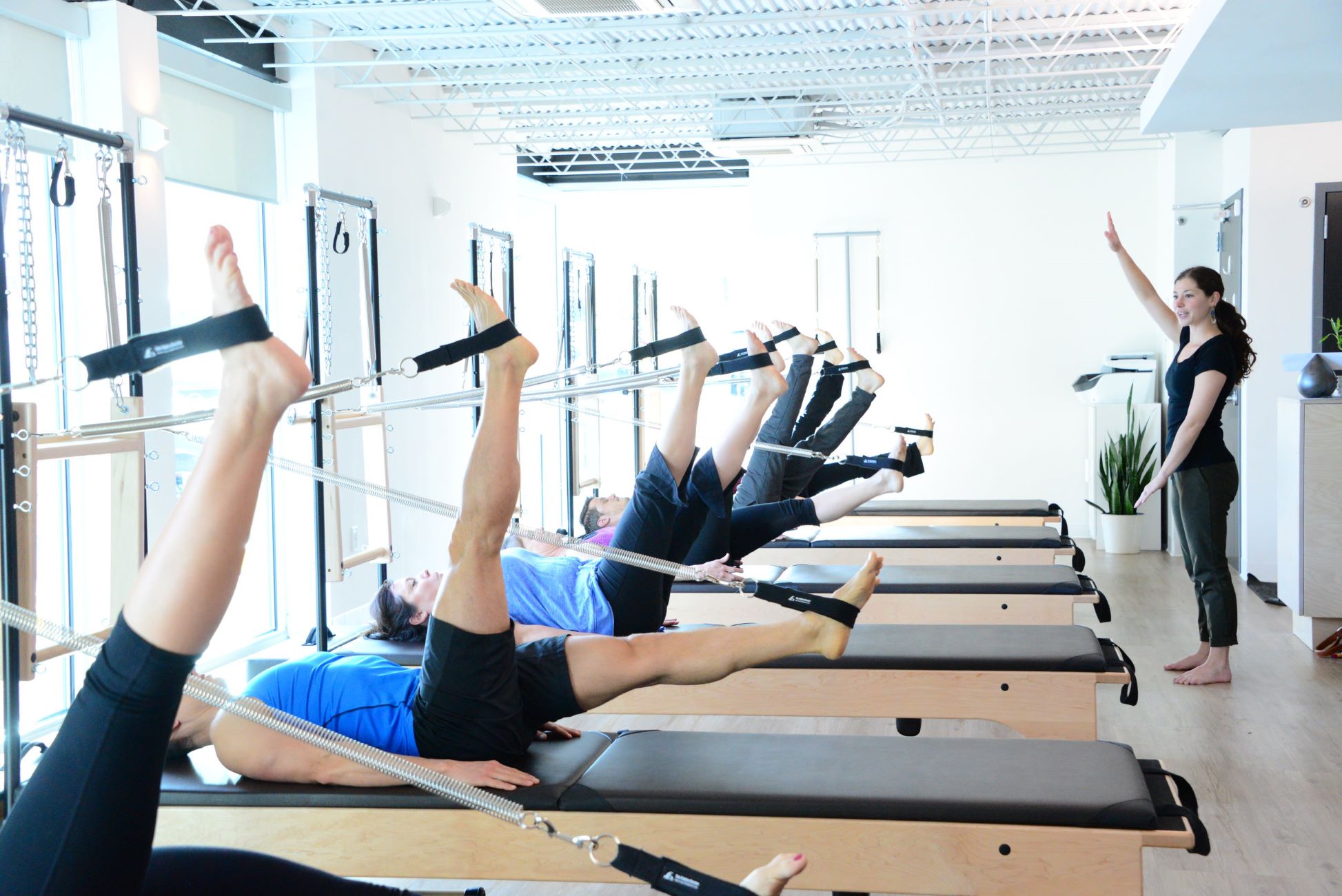Home>Training & Techniques>The Turkish Get-Up: Benefits And Techniques For A Full-Body Exercise
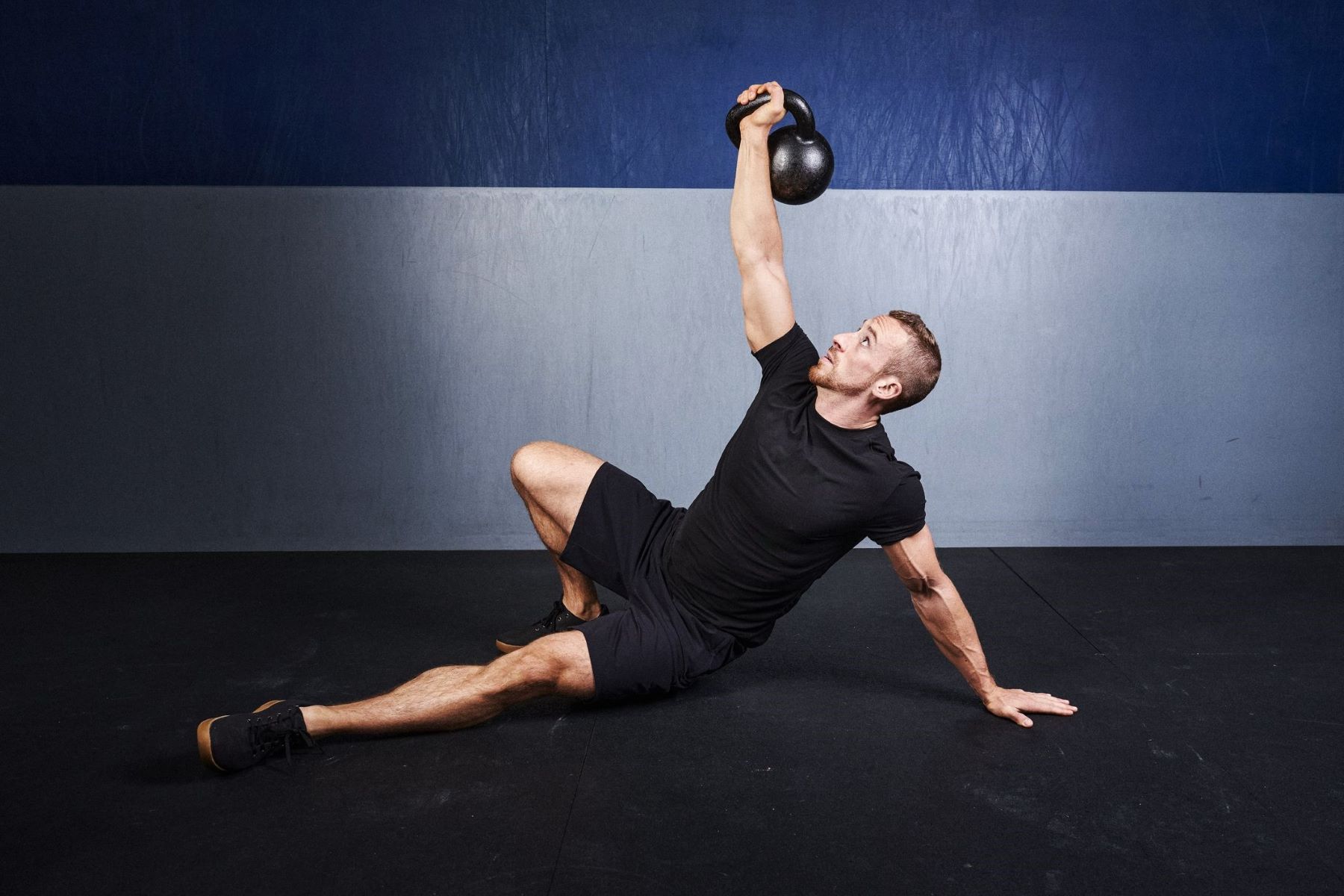

Training & Techniques
The Turkish Get-Up: Benefits And Techniques For A Full-Body Exercise
Published: March 3, 2024
Discover the benefits and techniques of the Turkish Get-Up, a full-body exercise, with our comprehensive training guide. Learn the best techniques for mastering this effective workout. Ideal for those seeking training & techniques for a complete fitness routine.
(Many of the links in this article redirect to a specific reviewed product. Your purchase of these products through affiliate links helps to generate commission for Therunningadvisor.com, at no extra cost. Learn more)
Table of Contents
Introduction
The Turkish Get-Up is a full-body exercise that has gained popularity in recent years due to its effectiveness in building strength, stability, and mobility. This exercise, which originated from ancient Turkish wrestlers, has stood the test of time and is now a staple in many fitness routines.
The Turkish Get-Up involves a series of movements that require coordination, balance, and strength from various muscle groups. It is a multi-dimensional exercise that engages the core, shoulders, hips, and legs, making it a comprehensive workout for the entire body.
In this article, we will delve into the intricacies of the Turkish Get-Up, exploring its history, benefits, techniques, common mistakes to avoid, and how to incorporate it into your workout routine. Whether you are a fitness enthusiast looking to add a new dimension to your training or a beginner seeking to understand the fundamentals of this exercise, this comprehensive guide will provide valuable insights to help you master the Turkish Get-Up and reap its numerous benefits.
Understanding the Turkish Get-Up
The Turkish Get-Up is a dynamic and intricate exercise that requires a combination of strength, stability, and mobility. It is a full-body movement that involves transitioning from lying down to standing up while holding a weight overhead. This exercise is renowned for its ability to engage multiple muscle groups simultaneously, making it a highly efficient workout for enhancing overall strength and coordination.
The Turkish Get-Up is rooted in history, with its origins tracing back to ancient Turkish wrestlers who utilized this movement as a means of developing functional strength and agility. Over time, it has evolved into a fundamental exercise in modern fitness regimens, valued for its holistic approach to training the body.
At its core, the Turkish Get-Up is a multi-step exercise that challenges the body in various planes of motion. It requires a seamless coordination of movements as the individual progresses from a supine position to a standing posture while maintaining control over the weight. This exercise places a significant emphasis on stability, as the body must remain balanced and controlled throughout each phase of the movement.
One of the defining features of the Turkish Get-Up is its versatility. It can be performed with a wide range of weights, from kettlebells to dumbbells, allowing individuals to tailor the intensity of the exercise to their fitness level. Additionally, the Turkish Get-Up can be adapted to accommodate different ranges of motion, making it accessible to individuals with varying degrees of flexibility and mobility.
Understanding the intricacies of the Turkish Get-Up involves recognizing its multifaceted nature. It is not merely a strength exercise but also a test of coordination, proprioception, and mental focus. By mastering the Turkish Get-Up, individuals can cultivate a heightened awareness of their body and develop functional strength that translates into improved performance in various physical activities.
In the next sections, we will explore the specific benefits of the Turkish Get-Up, detailed techniques for its execution, common mistakes to avoid, and practical strategies for integrating this exercise into your workout routine. By gaining a comprehensive understanding of the Turkish Get-Up, you will be well-equipped to harness its potential and elevate your fitness journey.
Benefits of the Turkish Get-Up
The Turkish Get-Up offers a myriad of benefits that extend beyond traditional strength training exercises. Its holistic approach to fitness makes it a valuable addition to any workout routine. Here are the key benefits of incorporating the Turkish Get-Up into your training regimen:
-
Full-Body Strength: The Turkish Get-Up engages multiple muscle groups simultaneously, including the shoulders, core, hips, and legs. This comprehensive activation of various muscle groups fosters overall strength development, leading to improved functional fitness and enhanced performance in daily activities.
-
Stability and Coordination: Performing the Turkish Get-Up requires precise coordination and stability throughout the entire movement. This not only strengthens the stabilizing muscles but also enhances proprioception and body awareness, contributing to better balance and coordination in other physical endeavors.
-
Joint Mobility and Flexibility: The multi-dimensional nature of the Turkish Get-Up promotes joint mobility and flexibility, particularly in the hips, shoulders, and thoracic spine. The exercise encourages a full range of motion, aiding in the maintenance of joint health and preventing stiffness.
-
Core Strengthening: The Turkish Get-Up places a significant demand on the core muscles to stabilize the body during transitions. This leads to improved core strength and endurance, which are essential for maintaining proper posture and spinal alignment.
-
Functional Fitness: As a dynamic movement that mimics real-life activities, the Turkish Get-Up enhances functional fitness by improving the body's ability to perform everyday tasks with efficiency and reduced risk of injury.
-
Mind-Body Connection: Executing the Turkish Get-Up requires mental focus and concentration, fostering a strong mind-body connection. This heightened awareness of movement and body positioning can translate to improved performance in other physical and athletic pursuits.
-
Scalability and Adaptability: The Turkish Get-Up can be tailored to accommodate individuals of varying fitness levels and abilities. It can be modified to suit different ranges of motion and can be performed with a wide range of weights, making it accessible to beginners and challenging for advanced practitioners.
-
Time Efficiency: Due to its comprehensive nature, the Turkish Get-Up offers a time-efficient workout that targets multiple muscle groups in a single exercise, making it a valuable addition to time-constrained training sessions.
Incorporating the Turkish Get-Up into your fitness routine can yield significant physical and mental benefits, making it a versatile and effective exercise for individuals seeking a well-rounded approach to strength and mobility training.
Techniques for Performing the Turkish Get-Up
Mastering the techniques for performing the Turkish Get-Up is essential for reaping its full benefits and minimizing the risk of injury. This multi-step exercise demands precision, control, and fluidity of movement. Here's a detailed breakdown of the techniques involved in executing the Turkish Get-Up:
1. Starting Position:
- Begin by lying on your back with your legs extended and a kettlebell or dumbbell held in one hand, arm fully extended toward the ceiling.
- Keep your eyes on the weight throughout the movement to maintain proper alignment.
Read more: The Benefits And Techniques Of Running
2. Rolling to Elbow:
- Roll onto your side and prop yourself up on your elbow while keeping the weight positioned vertically above your shoulder.
- Maintain a stable base by bracing your core and engaging the muscles on the side of your body.
3. Lifting to Hand:
- Press through your grounded arm to lift your torso off the ground, supporting your weight on your hand while keeping the weight overhead.
- Ensure that your shoulder remains packed and stable to support the weight.
4. Bridge Position:
- Lift your hips off the ground, creating a straight line from your hand to your knee on the same side.
- Engage your glutes and core to maintain stability and prevent overarching of the lower back.
5. Sweep to Knee:
- Sweep your extended leg underneath your body, positioning it in a kneeling stance while maintaining an upright torso and the weight overhead.
- Focus on controlled movement and maintaining balance throughout the transition.
6. Half Kneeling to Stand:
- Push off the ground with your front foot to rise into a half-kneeling position, ensuring that the weight remains stable overhead.
- Engage your core and maintain an upright posture as you transition to the standing position.
7. Reverse the Movements:
- Reverse the sequence of movements to return to the starting position, emphasizing control and stability throughout each phase of the descent.
- Lower yourself back to the ground with precision and maintain awareness of the weight's position.
Key Points to Remember:
- Focus on smooth and controlled transitions between each step of the Turkish Get-Up.
- Maintain proper alignment and stability, especially in the shoulder and core, to support the weight overhead.
- Engage the muscles of the lower body and core to facilitate fluid movement and stability throughout the exercise.
By honing the techniques for performing the Turkish Get-Up and paying attention to form and execution, individuals can maximize the effectiveness of this full-body exercise and elevate their overall strength, stability, and mobility.
Common Mistakes to Avoid
Mastering the Turkish Get-Up requires attention to detail and a focus on proper form to ensure safety and maximize the exercise's effectiveness. Avoiding common mistakes is crucial for executing the Turkish Get-Up with precision and reaping its full benefits. Here are some prevalent errors to steer clear of when performing the Turkish Get-Up:
-
Lack of Stability and Control: Failing to maintain stability and control throughout the movement can compromise the integrity of the exercise. It is essential to engage the core and stabilizing muscles to prevent wobbling or loss of balance, especially when transitioning between different positions.
-
Rushing Through Transitions: Rushing through the transitions between each step of the Turkish Get-Up can lead to sloppy form and increase the risk of injury. Each phase of the movement should be executed with deliberate and controlled actions, emphasizing smooth transitions and maintaining stability.
-
Overlooking Shoulder Stability: Neglecting to stabilize the shoulder that is supporting the weight overhead can result in undue stress on the joint and surrounding muscles. Proper shoulder stability is crucial for safely executing the Turkish Get-Up and preventing potential shoulder injuries.
-
Inadequate Hip Activation: Failing to engage the hips and glutes during the bridge position and transitions can diminish the exercise's effectiveness. Activating the hips is essential for maintaining stability and generating power throughout the movement.
-
Poor Alignment and Posture: Allowing the body to deviate from proper alignment and posture can compromise the integrity of the Turkish Get-Up. It is important to maintain a straight and stable alignment from the head to the hips, ensuring that the weight is supported with optimal biomechanics.
-
Excessive Weight for Skill Level: Using a weight that exceeds one's current skill level can lead to compromised form and increased risk of injury. It is crucial to select a weight that allows for proper execution of the Turkish Get-Up while challenging the individual's strength and stability.
-
Neglecting Breathing and Mind-Body Connection: Failing to synchronize breathing with the movements and disregarding the mind-body connection can detract from the exercise's effectiveness. Mindful breathing and mental focus are integral components of performing the Turkish Get-Up with precision and control.
By being mindful of these common mistakes and prioritizing proper form and technique, individuals can optimize their performance of the Turkish Get-Up, minimize the risk of injury, and fully harness the exercise's benefits for overall strength, stability, and mobility.
Incorporating the Turkish Get-Up into Your Workout Routine
Incorporating the Turkish Get-Up into your workout routine can significantly enhance the comprehensiveness and effectiveness of your training regimen. This dynamic exercise offers a multitude of benefits, making it a valuable addition to various fitness programs. Here's a detailed guide on how to seamlessly integrate the Turkish Get-Up into your workout routine, maximizing its impact on your overall strength, stability, and mobility.
1. Warm-Up and Preparation
Before incorporating the Turkish Get-Up into your workout routine, it is essential to engage in a thorough warm-up to prepare your body for the demands of this exercise. Dynamic movements, mobility drills, and light cardio can help activate the muscles and prime your body for the Turkish Get-Up. Additionally, performing specific joint mobility exercises for the shoulders, hips, and thoracic spine can optimize your readiness for this multi-dimensional movement.
2. Integration into Strength Training
The Turkish Get-Up can be integrated into your strength training sessions as a standalone exercise or as part of a comprehensive circuit. Incorporating it as a standalone exercise allows you to focus on mastering the techniques and maximizing the benefits of this full-body movement. Alternatively, including the Turkish Get-Up in a circuit format alongside other strength exercises can create a dynamic and challenging workout that targets multiple muscle groups while enhancing cardiovascular endurance.
3. Progression and Variation
As you become proficient in performing the Turkish Get-Up, you can explore progression and variation to continually challenge your body. This can involve increasing the weight used, refining the fluidity of the movement, or incorporating tempo variations to emphasize different aspects of the exercise. Additionally, exploring different implements such as kettlebells, dumbbells, or even bodyweight variations can add diversity to your training and stimulate further adaptation.
4. Functional Integration
Given its emphasis on functional movement patterns, the Turkish Get-Up can be integrated into functional fitness routines aimed at enhancing everyday movement patterns and activities. By simulating real-life transitions from lying to standing positions while holding weight overhead, the Turkish Get-Up promotes functional strength and mobility that directly translate to improved performance in daily tasks and activities.
5. Recovery and Regeneration
Incorporating the Turkish Get-Up into your workout routine should be complemented with adequate focus on recovery and regeneration. This includes incorporating mobility work, stretching, and targeted foam rolling to alleviate muscle tension and promote optimal recovery. By prioritizing recovery strategies, you can ensure that your body is prepared for subsequent training sessions and can adapt effectively to the demands of the Turkish Get-Up.
By strategically integrating the Turkish Get-Up into your workout routine and exploring various approaches to its implementation, you can unlock its full potential as a transformative full-body exercise. Whether you are focused on strength development, functional fitness, or overall mobility, the Turkish Get-Up offers a versatile and dynamic addition to your training arsenal, contributing to a well-rounded and effective workout routine.
Conclusion
In conclusion, the Turkish Get-Up stands as a testament to the enduring efficacy of ancient training techniques in modern fitness regimens. This multi-dimensional exercise, rooted in the heritage of Turkish wrestlers, has transcended time and cultural boundaries to emerge as a cornerstone of full-body strength and mobility training. By seamlessly integrating the Turkish Get-Up into workout routines, individuals can unlock a myriad of physical and mental benefits, ranging from enhanced strength and stability to improved coordination and functional fitness.
The comprehensive nature of the Turkish Get-Up makes it a versatile and valuable addition to any fitness program. Its ability to engage multiple muscle groups simultaneously, foster joint mobility, and cultivate a strong mind-body connection sets it apart as a holistic exercise that transcends traditional strength training. Moreover, the scalability and adaptability of the Turkish Get-Up make it accessible to individuals of varying fitness levels, allowing for personalized progression and continual challenge.
By mastering the techniques and avoiding common mistakes associated with the Turkish Get-Up, individuals can harness its full potential and experience a transformative impact on their overall physical well-being. The exercise's emphasis on stability, control, and fluid movement fosters a heightened awareness of body mechanics and promotes functional strength that extends beyond the confines of the gym.
As the fitness landscape continues to evolve, the Turkish Get-Up remains a timeless testament to the enduring principles of strength, stability, and mobility. Its integration into modern workout routines serves as a bridge between ancient wisdom and contemporary fitness, offering a dynamic and effective approach to full-body training. Whether utilized as a standalone exercise, integrated into strength training sessions, or incorporated into functional fitness routines, the Turkish Get-Up holds the promise of unlocking untapped potential and elevating the overall quality of physical performance.
In essence, the Turkish Get-Up transcends its historical origins to embody a timeless philosophy of holistic strength and mobility. By embracing this exercise and incorporating it into diverse training modalities, individuals can embark on a journey of self-discovery, physical empowerment, and enduring vitality. The Turkish Get-Up stands as a testament to the enduring power of movement, resilience, and the pursuit of holistic well-being.

